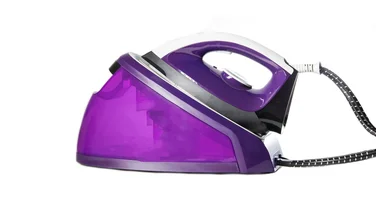To help us provide you with free impartial advice, we may earn a commission if you buy through links on our site. Learn more

Though most of us have a washing machine in our homes, operating it beyond opening the door and bunging in a mixed load of dirty clothes can seem daunting. With so many different compartments for different liquids, a list of apparently undecipherable symbols and more cycles than could possibly ever be necessary, using a washing machine to its full potential can be a real head-scratcher. The good news is, it needn’t be.
This handy explainer tells you everything you need to become master of the washing machine. From the best cycles to use to where to put your fabric softener, our tips will have you working through your laundry pile in double-quick time – without a shrunken jumper in sight.
Read our guide to the best washing machines here.
Sorting your laundry
It’s important not to fall at the first hurdle. By sorting your laundry basket into piles you’ll avoid common washing hazards like shrinkage or colour mixing.If you’re not sure of a garment’s material or care instructions then check the label; some will feature internationally recognised symbols for ‘dry clean only’, ‘hand wash only’ or similar, so check our guide on laundry and washing machine symbols for more information.
Otherwise, pay attention to any temperatures mentioned and sort into similar colours: usually lights, darks and brights, with separate piles for materials like wool, silk, denim and cotton.
This may seem like a fiddly extra step, but Gwilym Snook, heated laundry expert at AO.com says that it’s important to keep certain fabrics separate from your main laundry. “Washing machines can become a hotspot for bacteria and it is important to separate different items in your laundry loads,” he explains.
“For example, your kitchen towels shouldn’t be washed alongside your everyday clothing. Instead, wash the towels separately on a hot wash with the right amount of detergent so that you can avoid the spread of bacteria.’

Delicates, such as underwired lingerie or heavily beaded items, should also be washed separately and you may wish to use a mesh laundry bag that goes into the machine for extra protection.
Check pockets for tissues, coins and worse before disaster strikes, and it’s a good idea to fasten all buttons, zips and hooks to maintain the garment’s shape and reduce risk of tearing. Items prone to fading should be turned inside out to preserve their colour.
READ NEXT: Best Bosch washing machines
Loading the washing machine
Domestic washing machines in the UK are generally front-loading with a capacity of between 6-12kg, which refers to the weight of dry clothes.
It’s important to get to know what your machine can hold for best results. Sophie Lane, Product Training Manager at Miele GB adds: “It can be tempting to put as many clothes into your washing machine as possible but overloading can trap dirt between the fabric if there is not enough room for the clothes to move within the drum.
Stick to the recommended load sizes for each programme to ensure brilliant results.”
What are all the different drawers for?
Your washing machine will likely have two or three compartments in a pull-out drawer. The largest section is for your washing detergent, whether in liquid or powder form. Check the manufacturer’s instructions for dosage; this will also be affected by whether you live in a hard water area and how large and/or heavily soiled your wash load is. These days, liquid washing tabs, washing sheets and many detergents are designed to be added straight to the drum (where your clothes go), so do check the pack.
See our guide to the best washing powder here.

Fabric conditioner is designed to add fragrance and softness to laundry. But while it feels and smells nice it is not suitable for all materials – particularly moisture-wicking materials – as it can compromise the fibres, leading to faster deterioration.
Many people use it for towels to avoid hardness, but it is not helpful to their integrity and the same goes for things like workout gear. If you do use it for your bedding and clothing, add it to the differently shaped or coloured compartment. It may prominently feature a flower symbol.
If you have a third drawer, this is for liquids added to aid pre-wash cycles. There are some specially designed products for pre-soaking, otherwise you can add an extra dose of your standard detergent here to pre-wash any heavily soiled items before the cycle begins.
READ NEXT: Best integrated washer dryers
What temperature do I need?
30°C – These days modern washing machines have brilliant colder wash cycles, so most of your everyday wash loads can go on a 30°C cycle for a general refresh. This also has the benefit of being more energy efficient, which makes it cheaper to run and kinder to the planet..
40-60°C – Harder-to-wash fabrics like wool, cotton and linen are best at the lower end of these temperatures, and to eliminate bacteria and viruses from items like bedding, cloths and towels a 40-60°C cycle is ideal.
90°C – This setting is rarely used. It’s usually reserved for cleaning cycles on your machine, or for a last resort at getting really stubborn stains out of white cotton or linen.
What cycle should I select?
We’ll run through the most commonly featured cycle settings here. Note that, depending on your machine, the pre-set cycle may be adjustable to tweak the spin speed or temperature further.

Pre-wash – If any items are stained, then you can treat them before washing by spot cleaning with stain remover or detergent (try to avoid abrasive rubbing which can negatively affect the area treated), but for more widespread soiling you need the pre-wash cycle. This will soak the wash load in detergent or pre-wash solution in cool water before beginning the desired cycle.
Cotton – Cotton can withstand hotter temperatures and a higher level of rotation, so this is good for hard wearing plain items. But, as it often features a high-speed spin to get rid of excess water absorbed, take care not to put anything delicate in on this cycle, even if it is cotton.
Synthetics or Mix – This cycle is good for your everyday mixed loads and man-made materials like athleisure wear or polyester-style knits. It has a lower temperature, agitation and spin speed that works for most clothing.
Hand wash – Lucky you, if your machine has this setting it saves you the job of manually hand washing more delicate items. Good for merino, cashmere, heavily embellished garments and anything labelled ‘hand wash only’ on the care instructions.
Eco – A cool-temperature, low-spin wash that tends to last a lot longer than other cycles. Great for giving most wash loads a good clean with one eye on your energy bills.
Quick wash – A setting for when you’re short of time and need things cleaned fast. Usually under half an hour and only useful for lightly worn items. It is also likely to have a high-spin speed attached to make a head start on drying your items.
Delicates – Speaks for itself. This wash cycle won’t agitate delicates like lingerie and lace thanks to its low-agitation and low-spin programme.
Spin and rinse – No washing involved here, so don’t add any detergent to the drum or drawer for this setting. Sometimes used in place of the pre-wash setting and also useful for rinsing detergent or fabric conditioner from already washed or hand washed loads.
READ NEXT: Best integrated washing machines
What other functions does my washing machine have?
Some machines will also have a timer function, which allows you to prepare cycles ahead of time. It’s useful for running cycles at times when electricity may be cheaper, or so your wash load is finished and ready to be dried first thing in the morning.
Appliances with drying functions (washer dryers) are also common and save the space of having two separate machines. See our guide to the best washer dryers here. These tend to have two heat settings for drying; use the higher setting for hardy materials like towels, bedding and cotton and dry synthetics on the lower heat, if at all.
Some machines, like the Siemens iQ500 WM14T790GB even have smart technology so you can set cycles via your smartphone.
Do I need to clean my washing machine?
In a word, yes. Machine machines tend to last years – even cheaper models – but to keep yours functioning in top condition for as long as possible it does need some degree of maintenance.

“Washing at low temperatures for long periods of time can result in bacteria and odours building up and can cause whites to go grey and dull,” explains Miele’s Sophie Lane. “We recommend running a programme with a temperature of at least 60 degrees every 4-6 weeks as this will thoroughly clean the washing machine drum.’ You should also use a specially formulated cleaning solution.
READ NEXT: How to clean your washing machine
How to use a washing machine step-by-step
1. Load the drum with your sorted washing pile, ensuring that all zips and fastenings are secure, pockets are empty and any clothing prone to fading is turned inside out. Do not overload; aim for half to three-quarters full or your load will not be thoroughly washed.
2. If using the pre-wash setting due to heavy soiling, add detergent to the smaller rectangular compartment or as per manufacturer’s instructions. If your wash load is whites, consider using a brightening solution – this is usually a powder which is added directly to the drum. Add the required dose of detergent to the large compartment in the drawer, or to the drum, as directed by the manufacturer. Add fabric conditioner to the third compartment if using.
3. Select the appropriate programme for your load using the lowest temperature possible.
4. Close the door firmly and wait to check the machine begins the cycle.
5. When the cycle is complete, empty the machine as soon as possible to avoid your freshly washed items breeding bacteria and smelling unpleasant.
6. Wipe the silicone seal after every few washes and run a hot maintenance wash with cleaner monthly to extend the lifespan of your machine.






